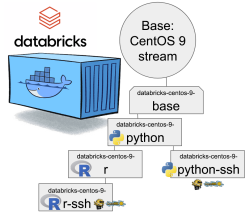Databricks CentOS 9 Stream containers
Thursday, October 20. 2022
Earlier this year I was tinkering with Databricks and got fed up with Ubuntu 18 and 20 with pretty old Python in it. Easy fix! I just made containers with CentOS so I could have more recent versions of stuff in my nodes.
Natural next move was to bump CentOS version from 8 to 9. While at it I discarded the previous hierarchy. Here is the original pic:
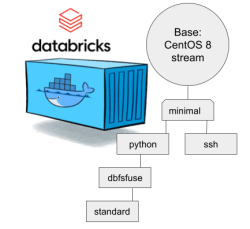
CentOS 8 containers explained:
- Minimal: CentOS 8 Stream + stuff to make CentOS work in Apache Spark / Databricks
- SSH: Minimal + OpenSSH server for those running Databricks on top of their own VNets. If you aren't this won't do you any good. TCP/22 won't be open from The World.
- Python: This here is the beef in Databricks! Running a Jupyter Notebook / IPython will absolutely definitely need this.
- DBFS FUSE: Linux user file system to attach the container into DatabricksFS / HadoopFS
- Standard: DBFS FUSE + OpenSSH, see disclaimer from SSH container about connectivity
The hierachy originates from https://github.com/databricks/containers/tree/master/experimental. Initially I just went with the flow, but as always, gaining more information and experience on Databrics, it became apparent to me this separation wasn't working.
CentOS 8 containers explained:
- Base: CentOS 9 Stream + stuff to make CentOS work in Apache Spark / Databricks + FUSE
- Rationale: You will want to have DBFS mounted to your container anyway. It won't be a security risk and FUSE is a very light piece of software in a Linux.
- Note: This will not work as an Apache Spark / Databricks node.
- Python: Running a Jupyter Notebook will absolutely definitely need this.
- Rationale: A Spark node without proper Python won't boot. This should be in minimal/base to begin with, but I just wanted to separate all the required Linux components and settings from a Python.
- Note: This is the minimal. This will boot and work.
- Python-SSH: Python + OpenSSH
- Note: You will need your own VNet to get SSH-access into your Spark Driver -node.
- Note 2: If you don't specify your own, a managed VNet will be used. You just won't have any access into it.
- R: For statistical computing needs, quite a few users prefer R programming language. This here container-type will enable you to do that from a Jupyter Notebook in Databricks. Will contain Python.
- Rationale: R is a huge chunk of container. If you won't be needing this, stick with Python which is so much lighter to load and operate.
- R-SSH: R + OpenSSH
- See disclaimer from above
Python components version table
To verify what Databicks puts into their nodes, I gathered versions following Python components.
| Python component | CentOS 9 | 11.2 | 11.1 | 11.0 | 10.4 LTS | 9.1 LTS |
|---|---|---|---|---|---|---|
| ipykernel | 6.16.0 | 6.12.1 | 6.12.1 | 6.12.1 | 5.3.4 | 5.3.4 |
| ipython | 7.32.0 | 7.32.0 | 7.32.0 | 7.32.0 | 7.22.0 | 7.22.0 |
| Jinja2 | 2.11.3 | 2.11.3 | 2.11.3 | 2.11.3 | 2.11.3 | 2.11.3 |
| jupyter-core | 4.11.1 | 4.8.1 | 4.8.1 | 4.8.1 | 4.7.1 | 4.7.1 |
| matplotlib | 3.4.3 | 3.4.3 | 3.4.3 | 3.4.3 | 3.4.2 | 3.4.2 |
| numpy | 1.20.3 | 1.20.3 | 1.20.3 | 1.20.3 | 1.20.1 | 1.19.2 |
| pandas | 1.3.4 | 1.3.4 | 1.3.4 | 1.3.4 | 1.2.4 | 1.2.4 |
| pyarrow | 4.0.0 | 7.0.0 | 7.0.0 | 7.0.0 | 4.0.0 | 4.0.0 |
| six | 1.16.0 | 1.16.0 | 1.16.0 | 1.16.0 | 1.15.0 | 1.15.0 |
| virtualenv | 20.16.5 | 20.8.0 | 20.8.0 | 20.8.0 | 20.4.1 | 20.4.1 |
Comparison of other differences:
| Component | CentOS 9 | 11.2 | 11.1 | 11.0 | 10.4 LTS | 9.1 LTS |
|---|---|---|---|---|---|---|
| Scala | 2.12.14 | 2.12.14 | 2.12.14 | 2.12 | 2.12 | 2.12 |
| Spark | 3.3.0 | 3.3.0 | 3.3.0 | 3.3.0 | 3.2.1 | 3.2.1 |
| Python | 3.9.14 | 3.9.5 | 3.9.5 | 3.9.5 | 3.8.10 | 3.8.10 |
| R | 4.2.1 | 4.1.3 | 4.1.3 | 4.1.3 | 4.1.2 | 4.1.2 |
| Linux | CentOS 9 Stream |
Ubuntu 20.04.5 LTS |
Ubuntu 20.04.5 LTS |
Ubuntu 20.04.5 LTS |
Ubuntu 20.04.5 LTS |
Ubuntu 20.04.5 LTS |
These two tables explain very well my motivation of doing all this. Getting a full control of what goes into those containers. Second motivation is to publish the recipe for anybody to tailor their own custom made containers containing the versions of software they'll be needing.
Testing my container
Here is a sample notebook I used while develping this:
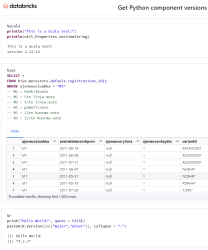
Modern Databricks notebook supports SQL, R and Scala with ease. I absolutely wanted to see what'll be needed to get all of those running.
To repeat: Python will be needed to get the entire Databricks node booting. On top of that, Scala will be included by Apache Spark. SQL will be handled by Spark. R will be provided by Rserve and interface to that is via notebook's R Python-client.
Final words
Databricks: Please, publish your own work also. For unknown reason you aren't doing that.
ChromeOS Flex test drive
Monday, October 10. 2022
Would you like to run an operating system which ships as-is, no changes allowed after installation? Can you imagine your mobile phone without apps of your own choosing? Your Windows10 PC? Your macOS Monterey? Most of us cannot.
As a computer enthusiast, of course I had to try such a feat!
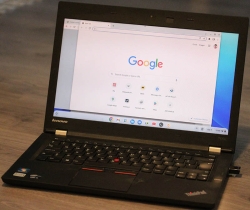
Prerequisites
How to get your ball rolling, check out Chrome OS Flex installation guide @ Google. What you'll need is a supported hardware. In the installation guide, there is a certified models list and it will contain a LOT of supported PC and Mac models. My own victim/subject/target was 12 year old Lenovo and even that is in the certified list! WARNING: The hard drive of the victim computer will be erased beyond data recovery.
The second thing you'll need is an USB-stick to boot your destination ChromeOS. Any capacity will do. I had a 32 GiB stick and it used 128 MiB of it. That's less than 1% of the capacity. So, any booting stick will do the trick for you. Also, you won't be needing the stick after install, requirement is to just briefly slip an installer into it, boot and be done.
Third and final thing you'll be needing is a Google Chrome browser and ChromeOS recovery media extension into it:
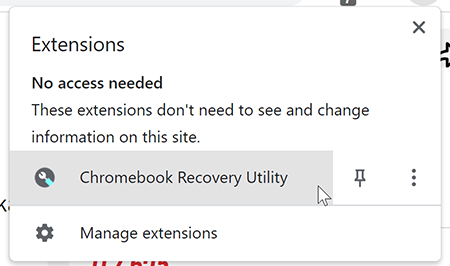
To clarify, let's repeat that:
Your initial installation into your USB-stick will be done from Google Chrome browser using a specific extension in it.
Yes. It sounds bit unorthodox or different than other OS does. Given Google's reach on web browser users, that seemed like the best idea. This extension will work in any OS.
To log into your ChromeOS, you will need a Google Account. Most people on this planet do have one, so most likely you're covered. On the other hand, if your religious beliefs are strongly anti-Google, the likelihood of you running an opearting system made by Google is low. You rare person won't be able to log in, but everybody else will.
Creating installation media
That's it. As there won't be much data on the stick, the creation flys by fast!
Installing ChromeOS Flex
If media creation was fast, this will be even faster.
Just boot the newly crated stick and that's pretty much it. The installer won't store much information to the drive, so you will be done in a jiffy.
Running ChromeOS Flex
Log into the machine with your Google Account. Remenber: This OS won't work without a network connection. You really really will need active network connection to use this one.
All you have is set of Google's own apps: Chrome, Gmail, YouTube and such. By looking at the list in Find apps for your Chromebook, you'd initially think all is good and you can have our favorite apps in it. To make your (mis)belief stronger, even Google Play is there for you to run and search apps. Harsh reality sets in quite fast: you can not install anything via Google Play. All the apps in Google Play are for Android or real ChromeOS, not for Flex. Reason is obvious: your platform is running AMD-64 CPU and all the apps are for ARM. This may change in the future, but at the time of writing it is what it is.
You lose a lot, but there is something good in this trade-off. As you literally can not install anything, not even malware can be installed. ChromeOS Flex has to be the safest OS ever made! Most systems in the world are manufactured from ground up to be generic and be able to run anything. This puppy isn't.
SSH
After initial investigation, without apps, without password manager, without anything, I was about to throw the laptop back to its original dust gathering duty. What good is a PC which runs a Chrome browser and nothing else? Then I found the terminal. It won't let you to actually enter the shell of our ChromeOS laptop. It will let you SSH to somewhere else.
On my own boxes, I'll always deactivate plaintext passwords, so I bumped into a problem. From where do I get the private key for SSH-session? Obvious answer is either via Google Drive (<shivers>) or via USB-stick. You can import a key to the laptop and not worry about that anymore.
Word of caution: Think very carefully if you want to store your private keys in a system managed for you by Google.
Biggest drawbacks
For this system to be actually usable, I'd need:
- Proper Wi-Fi. This 12 year old laptop had only Wi-Fi 4 (802.11n)
- This I managed to solve by using an Asus USB-AC51 -dongle to get Wi-Fi 5.
- lsusb:
ID 0b05:17d1 ASUSTek Computer, Inc. AC51 802.11a/b/g/n/ac Wireless Adapter [Mediatek MT7610U] - This won't solve my home network's need for Wi-Fi 6, but gets me to The Net.
- There is no list of supported USB-devices. I have bunch of 802.11ac USB-sticks and this is the only one to work in ChromeOS Flex.
- My password manager and passwords in it
- No apps means: no apps, not even password manager
- What good is a browser when you cannot log into anything. All my passwords are random and ridiculously complex. They were not designed to be remembered nor typed.
- In The world's BEST password advice, Mr. Horowitz said: "The most secure Operating System most people have access to is a Chromebook running in Guest Mode."
Nuisances
Installer won't let you change keyboard layout. If you have US keyboard, fine. If you don't, it sucks for you.
Partitions
As this is a PC, the partition table has EFI boot. Is running EXT-4 and EXT-2 partitions. Contains encrypted home drive. It's basically a hybrid between an Android phone and a Linux laptop.
My 240 GiB SSD installed as follows:
Partition Table: gpt
Disk Flags:
Number Start End Size File system Name Flags
11 32.8kB 33.3kB 512B RWFW
6 33.3kB 33.8kB 512B KERN-C chromeos_kernel
7 33.8kB 34.3kB 512B ROOT-C
9 34.3kB 34.8kB 512B reserved
10 34.8kB 35.3kB 512B reserved
2 35.3kB 16.8MB 16.8MB KERN-A chromeos_kernel
4 16.8MB 33.6MB 16.8MB KERN-B chromeos_kernel
8 35.7MB 52.4MB 16.8MB ext4 OEM
12 52.4MB 120MB 67.1MB fat16 EFI-SYSTEM boot, legacy_boot, esp
5 120MB 4415MB 4295MB ext2 ROOT-B
3 4415MB 8709MB 4295MB ext2 ROOT-A
1 8709MB 240GB 231GB ext4 STATE
Finally
This is either for explorers who want to try stuff out or alternatively for people whose needs are extremely limited. If all you do is surf the web or YouTube then this might be for you. Anything special --> forget about it.
The best part with this is the price. I had the old laptop already, so cost was $0.
MacBook Pro - Fedora 36 sleep wake - part 2
Friday, September 30. 2022
This topic won't go away. It just keeps bugging me. Back in -19 I wrote about GPE06 and couple months ago I wrote about sleep wake. As there is no real solution in existence and I've been using my Mac with Linux, I've come to a conclusion they are in fact the same problem.
When I boot my Mac, log into Linux and observe what's going on. Following CPU-hog can be observed in top:
RES SHR S %CPU %MEM TIME+ COMMAND
0 0 I 41.5 0.0 2:01.50 [kworker/0:1-kacpi_notify]
ACPI-notify will chomp quite a lot of CPU. As previously stated, all of this will go to zero if /sys/firmware/acpi/interrupts/gpe06 would be disabled. Note how GPE06 and ACPI are intertwined. They do have a cause and effect.
Also, doing what I suggested earlier to apply acpi=strict noapic kernel arguments:
grubby --args="acpi=strict noapic" --update-kernel=$(ls -t1 /boot/vmlinuz-*.x86_64 | head -1)
... will in fact reduce GPE06 interrupt storm quite a lot:
RES SHR S %CPU %MEM TIME+ COMMAND
0 0 I 10.0 0.0 0:22.92 [kworker/0:1-kacpi_notify]
Storm won't be removed, but drastically reduced. Also, the aluminium case of MBP will be a lot cooler.
However, by running grubby, the changes won't stick. Fedora User Docs, System Administrator’s Guide, Kernel, Module and Driver Configuration, Working with the GRUB 2 Boot Loader tells following:
To reflect the latest system boot options, the boot menu is rebuilt automatically when the kernel is updated or a new kernel is added.
Translation: When you'll install a new kernel. Whatever changes you did with grubby won't stick to the new one. To make things really stick, edit file /etc/default/grub and have line GRUB_CMDLINE_LINUX contain these ACPI-changes as before: acpi=strict noapic
Many people are suffering from this same issue. Example: Bug 98501 - [i915][HSW] ACPI GPE06 storm
Even this change won't fix the problem. Lot of CPU-resources are still wasted. When you close the lid for the first time and open it again, this GPE06-storm miraculously disappears. Also what will happen, your next lid open wake will take couple of minutes. It seems the entire Mac is stuck, but it necessarily isn't (sometimes it really is). It just takes a while for the hardware to wake up. Without noapic, it never will. Also, reading the Freedesktop bug-report, there is a hint of problem source being Intel i915 GPU.
Hopefully somebody would direct some development resources to this. Linux on a Mac hardware runs well, besides these sleep/sleep-wake issues.
QNAP Stopping Maintenance of TS-419P II (yet again)
Monday, September 19. 2022
Back in 2018, Qnap announced to stop supporting my NAS on December 2020. They walked that date back multiple times and at the time of writing, the EOL date is on October 2022. I hope they don't mean it this time, but am afraid they will:
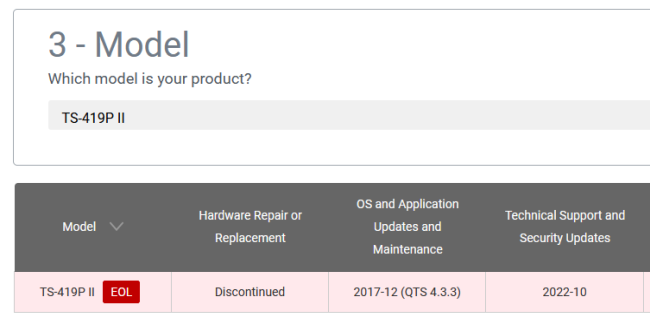
Recent security advisory QSA-22-24 is warning about DeadBolt Ransomware.
The campaign appears to target QNAP NAS devices running Photo Station with internet exposure.
Apparently, if you published your Photo Station photos to public Internet, your NAS-box was at risk of being encrypted and ransom would be required.
This is something similar what happened back in February 2019, see NAS-201902-13 about details of QNAPCrypt / eCh0raix. If you hadn't patched your Qnap and something crawled past the box, it was possible to brute-force their way into it aaaaand encrypt the files aaaand ransom bitcoin to restore the files. See: New eCh0raix Ransomware Brute-Forces QNAP NAS Devices
Apparently running a NAS is becoming more and more demanding. Maybe I have a wrong brand or something?
State of Ubisoft in 2022
Sunday, September 18. 2022
Couple months ago Ubisoft decided to make paying customers hate them. Early July they made an announcement for Decommissioning of online services for older Ubisoft games. The link here is to Waybackmachine as original announcement has been updated multiple times.
Quote from Ubisoft:
technology that drove those services becomes obsolete
Ok. I and many others paid for your 15 products. Why should I first send you my money and then wait for you not to maintain servers. Technology becomes obsolete every day. What proper software engineers do, is update and maintain our running software. A decision to decommission Anno 2070 servers was reversed, apparently because the developers felt bad.
Ubisoft: Ask your competition! See how many games others are decommissioning.
Btw. if you didn't know, the technology in question is Java. See Oracle announcement from 2021: Java SE 7 End of Extended Support in July 2022 Obviously it took Ubi, in their infinite wisdom, almost an year to react to the last warning. End-of-life was known years ago. Also, I know moving from Java 1.7 forwards isn't trivial, but it isn't impossible either!
PS.
As Ubisoft is offering their UBI+ trial free-of-charge (subscription will turn into paid one after first month). Currently I have an active UBI+ -subscription, which I'm using to play their games. Obviously I'll cancel before paying. I urged you already in 2020 to take my suggestion: Don't send any of your money to them. I know I won't.
Hetzner outgoing mail - SMTP blocked on TCP/25
Sunday, August 28. 2022
For ages spammers' tactic has been to use either free trial of a service or payment via "liberated" credit card. As public cloud service providers want to lure in new customers, there is a habit of offering non-paid services for a period of time. All major providers like AWS, Azure and Google Cloud Platform have such free-of-charge use available.
Also smaller companies have such offering. Smaller companies (are still quite big, but not as big as biggest ones) would include Hetzner and OVHcloud. Both have number of data centers around the Europe and for any postmaster, are a royal pain in the ass. You can get a really cheap VM on either and start spewing spam email into unsuspecting SMTP-servers, like the one I maintain.
This type of free-spam-for-all isn't sustainable, or hasn't been for years, but these companies still allow it to happen. In 2021 Hetzner made a change for better. Lot wasn't communicated, however, this information was published to its customers:
Microsoft Blacklist
Microsoft maintains their own internal blacklists, which are used to reject emails coming from specific IP addresses.
Note: Entire info is available @ Hetzner website.
As a customer of Hetzner having an operational VM, I bumped into a new undocumented restriction applied to new accounts. On my own box, everything still works as usual. Has been for years. To my surprise, outgoing TCP/25 on a new account having a new VM is blocked. What!? Investigating this, led me to Hetzner customer support site, as it has following options for support request:
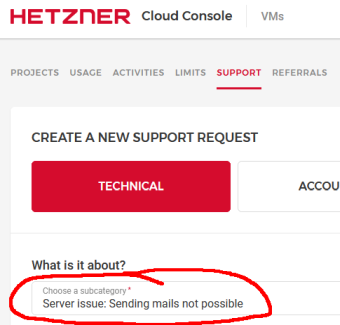
There is a drop-list with different types of problems having a specific category of Sending mails not possible. Apparently somebody designed the support pipeline for that particular need.
Lack of official documentation made me look in The Net. There I found a confirmation of this policy change. In June 2021 Bjørn Erling Fløtten of Norway wrote in his blog post Ditching Windows and AWS, diving into Linux and Hetzner following story:
Step 8: Setting up an email server
...
(This reminds me of the good old days when a mail server by default usually would be an open relay. Now you definitely get a more secure basic install)
Now I could actually also telnet to port 25 from my Amazon instance, and the connection appeared in the Postfix log. I have no clue why it did not work on the first attempt.
Time to ask Hetzner to open port 25 outbound (SMTP port).
(There is no mentioning of port 25 blocking anywhere on Hetzner's pages. But it is of course natural to assume that port 25 is blocked, even though the firewall administration page of Hetzner's Cloud Console says "All outbound traffic is allowed. Add a rule to restrict outbound traffic.").
So I decided to open a Support ticket, which suggest:
"Server issue"
and
"Server issue: Sending mails not possible"
Choosing the latter gives this:
"Outgoing traffic to ports 25 and 465 are blocked by default on all Cloud Servers.
A request for unblocking these ports and enabling the send mail option is only possible after the first paid invoice."Fair enough, some thrust needs to be established.
Invoice information says:
"Invoice information
You currently receive 1 invoice a month.
The invoice will be created on the following day:
...th of the month"...
Bjørn: Hint! Get a free-of-charge TLS-certificate somewhere. Most browsers refuse to enter your site. Thanks, though, for sharing your experience. Now I know to first wait for the invoice and then request for the ports to be opened.
Hetzner: Hint! Would it be smart to document all of this somewhere? Thanks for this change in your policy, though. Anybody needing SMTP will eventually get access. Deactivating option to spam at will makes life of criminals looking for the-easy-way look for other alternatives. This new policy leaves plenty of details about perpetrator's identity for police to investigate.
Update 19th Sep 2022:
Hetzners rules are both of these need to be true:
- First invoice must be paid
- Account must be at least month old
By paying, your SMTP-ports won't open. They open only after bit of a wait.
MacBook Pro - Fedora 36 sleep wake
Thursday, August 25. 2022
Few years back I wrote about running Linux on a MacBook Pro. An year ago, the OpenSuse failed to boot on the Mac. Little bit of debugging, I realized the problem isn't in the hardware. That particular kernel update simply didn't work on that particular hardware anymore. Totally fair, who would be stupid enough to attempt using 8 years old laptop. Well, I do.
There aren't that many distros I use and I always wanted to see Fedora Workstation. It booted from USB and also, unlike OpenSuse Leap, it also booted installed. So, ever since I've been running a Fedora Workstation on encrypted root drive.
One glitch, though. It didn't always sleep wake. Quite easily, I found stories of a MBP not sleeping. Here's one: Macbook Pro doesn't suspend properly. Unlike that 2015 model, this 2013 puppy slept ok, but had such deep state, it had major trouble regaining consciousness. Pressing the power for 10 seconds obviously recycled power, but it always felt too much of a cannon for simple task.
Checking what ACPI has at /proc/acpi/wakeup:
Device S-state Status Sysfs node
P0P2 S3 *enabled pci:0000:00:01.0
PEG1 S3 *disabled
EC S4 *disabled platform:PNP0C09:00
GMUX S3 *disabled pnp:00:03
HDEF S3 *disabled pci:0000:00:1b.0
RP03 S3 *enabled pci:0000:00:1c.2
ARPT S4 *disabled pci:0000:02:00.0
RP04 S3 *enabled pci:0000:00:1c.3
RP05 S3 *enabled pci:0000:00:1c.4
XHC1 S3 *enabled pci:0000:00:14.0
ADP1 S4 *disabled platform:ACPI0003:00
LID0 S4 *enabled platform:PNP0C0D:00
For those had-to-sleep -cases, disabling XHC1 and LID0 did help, but made wakeup troublesome. While troubleshooting my issue, I did try if disabling XHC1 and/or LID0 would a difference. It didn't.
Also, I found it very difficult to find any detailed information on what those registered ACPI wakeup -sources translate into. Lid is kinda obvious, but rest remain relatively unknown.
While reading System Sleep States from Intel, a thought occurred to me. Let's make this one hibernate to see if that would work. Sleep semi-worked, but I wanted to see if hibernate was equally unreliable.
Going for systemctl hibernate didn't quite go as well as I expected. It simply resulted in an error of: Failed to hibernate system via logind: Not enough swap space for hibernation
With free, the point was made obvious:
total used free shared buff/cache available
Mem: 8038896 1632760 2424492 1149792 3981644 4994500
Swap: 8038396 0 8038396
For those not aware: Modern Linux systems don't have swap anymore. They have zram instead. If you're really interested, go study zram: Compressed RAM-based block devices.
To verify the previous, running zramctl displayed prettyy much the above information in form of:
NAME ALGORITHM DISKSIZE DATA COMPR TOTAL STREAMS MOUNTPOINT
/dev/zram0 lzo-rle 7.7G 4K 80B 12K 8 [SWAP]
I finally gave up on that by bumping into article Supporting hibernation in Workstation ed., draft 3. It states following:
The Fedora Workstation working group recognizes hibernation can be useful, but due to impediments it's currently not practical to support it.
Ok ok ok. Got the point, no hibernate.
Looking into sleep wake issue more, I bumped into this thread Ubuntu Processor Power State Management. There a merited user Toz suggested following:
It may be a bit of a stretch, but can you give the following kernel parameters a try:
acpi=strictnoapic
I had attempted lots of options, that didn't sound that radical. Finding the active kernel file /boot/vmlinuz-5.18.18-200.fc36.x86_64, then adding mentioned kernel arguments to GRUB2 with: grubby --args=acpi=strict --args=noapic --update-kernel=vmlinuz-5.18.18-200.fc36.x86_64
... aaand a reboot!
To my surprise, it improved the situation. Closing the lid and opening it now works robust. However, that does not solve the problem where battery is nearly running out and I plug the Magsafe. Any power input to the system taints sleep and its back to deep freeze. I'm happy about the improvement, tough.
This is definitely a far fetch, but still: If you have an idea how to fix Linux sleep wake on an ancient Apple-hardware, drop me a comment. I'll be sure to test it out.
eSIM in iPhone
Friday, July 29. 2022
For vacation / touristing purposes, I did some travel. When leaving the comfort of EU/ETA-region cell phone mobile data changes into something tricky. Most telcos here in Finland offer you 15 GiB of roaming transfer per month inside EU/ETA. As I travelled into post-brexit UK, the gravity of current roaming agreements hit me. For those unaware (like me on London Heathrow airport): nothing works and if works, expect to pay per-GiB on gold bullions.
At hotel, free Wi-Fi was more than welcome addition to their service offering. With that I was able to figure out what the heck happened to my iPhone data and what measures could I take to enable it.
After weighing all the options, my solution was to purchase an eSIM. That's something I never even considered before. Being in "the spot" I just went for Holafly eSIM. I'm 99,9% sure their offering is not the best nor cheapest, their product simply was easily available. Their marketing must be superb!
List of options considered, but abandoned for different reasons included following:
- Not having data in my phone.
- Relying on public Wi-Fis. They were generally available in many sights and locations.
- Enabling non-EU/ETA data roaming on my subscription.
- Purchasing a prepaid SIM from nearby groceries store. They were generally available, not too expensive and easy to obtain.
This is what I paid with a credit card:
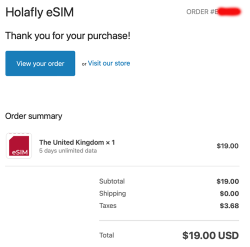
$19 USD. Living in Finland, the country most of the mobile stuff was invented at, the price for unlimited 5 day data was horrible. This is what Holafly delivered me via email:
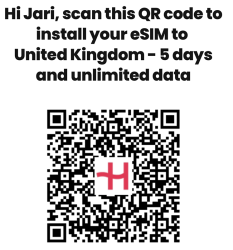
A QR-code! What! Are eSIMs distributed as QR-codes? Really?
More googling revealed: yes, that's correct. An eSIM is essentially a QR-code.
Payload of above matrix barcode would be as follows:
LPA:1$h3a.prod.ondemandconnectivity.com$8083B8A60025B1BA0E92A460388592035501C61BB74516AB176BA714D64AD60B
Studying the topic more with eSIM Whitepaper - The what and how of Remote SIM Provisioning and How Does an eSIM Work? Acronym LPA from the QR-code stands for Local Profile Assistant. Most stuff encoded into a QR-code I've ever seen has some sort of classifier as the initial value, so having something there would be expected. Next section with $-signs contain a hostname to contact followed by a password to provide for a server answering to requests on mentioned hostname to issue details of my newly purchased subscription for my phone. Host h3a.prod.ondemandconnectivity.com translates into 91.240.72.102, property of Thales group.
After walking through iPhone new data profile wizard, this is what I ended up with:
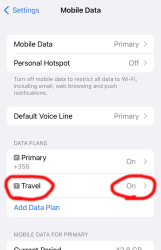
For unknown reason, the name of my eSIM was "Travel". That's something that can be chosen and renamed, even. Taking a look into the settings of my Travel-profile reveals following:
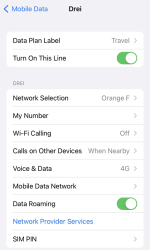
Whoo! That's an Austrian telco 3 subscription. The name "Drei" is German and means three (3). There are number of subsidiaries on 3 or Hutchison 3G Enterprises S.A.R.L., in case you are unaware of such telco group.
Now that I had mobile data, the obvious first thing was to verify where my Internet exit-node was located at. It seemed, my IPv4-range 91.223.100.0/26 was operated by Nexthop AS from Norway. A closer look on their geo-feed at https://geofeed.wgtwo.com/geofeed.csv revealed two network ranges of /26 or 62 available addresses:
# prefix,country_code,region_code,city,postal
91.223.100.0/26,GB,ENG,London,EC2V
91.209.212.0/26,GB,ENG,London,EC2V
Ultimately I was happy. Everything worked well, my iPhone had data connection for maps, googling, mail and iMessage.
To summarize:
- My iPhone is designed in California, USA and manufactured in China.
- I purchased an eSIM from Holafly, a Spanish company.
- I paid US dollars for the product on their website located in an UK server.
- What I got delivered from the purchase was credentials to connect to a French server.
- Response payload of from the French server was an Austrian mobile data subscription.
- Subscription's public Internet exit was located at United Kingdom, operated by a Norwegian company.
That's what I call an international operation! ![]()
PS. If you can hack the above eSIM to work for you, please inform me. It's a pre-paid, so I won't be the one taking the loss.
Euro tour 2022 pics
Thursday, July 28. 2022
As summer past time, this year I did some travelling in Europe, aka. Euro tour. It would look like this:

Pics from London, Paris and Amsterdam:


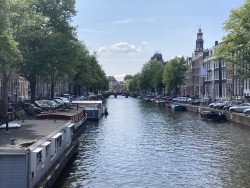
Note to City of Paris authorities:
I did post a copyrighted picture of Eiffel tower in night lighting.
That's a Ducktrix which I found from Amsterdam Duck Store. Apparently this rubber duck is suffering from a System Failure, or at least that's what the text says.
ArchLinux - Pacman - GnuPG - Signature trust fail
Wednesday, July 27. 2022
In ArchLinux, this is what happens too often when you're running simple upgrade with pacman -Syu:
error: libcap: signature from "-an-author-" is marginal trust
:: File /var/cache/pacman/pkg/-a-package-.pkg.tar.zst is corrupted (invalid or corrupted package (PGP signature)).
Do you want to delete it? [Y/n] y
error: failed to commit transaction (invalid or corrupted package)
Errors occurred, no packages were upgraded.
This error has occurred multiple times since ever and by googling, it has a simple solution. Looks like the solution went sour at some point. Deleting obscure directories and running pacman-key --init and pacman-key --populate archlinux won't do the trick. I tried that fix, multiple times. Exactly same error will be emitted.
Correct way of fixing the problem is running following sequence (as root):
paccache -ruk0
pacman -Syy archlinux-keyring
pacman-key --populate archlinux
Now you're good to go for pacman -Syu and enjoy upgraded packages.
Disclaimer:
I'll give you really good odds for above solution to go eventually rot. It does work at the time of writing with archlinux-keyring 20220713-2.
Post-passwords life: Biometrics for your PC
Monday, July 4. 2022
Last year I did a few posts about passwords, example. The topic is getting worn out as we have established the fact about passwords being a poor means of authentiaction, how easily passwords leak from unsuspecting user to bad people and how you really should be using super-complex passwords which are stored in a vault. Personally I don't think there are many interesting password avenues left to explore.
This year my sights are set into life after passwords: how are we going to authenticate ourselves and what we need to do to get there.
Biometrics. A "password" everybody of us carries everywhere and is readily available to be used. Do the implementation wrong, leak that "password" and that human will be in big trouble. Biometric "password" isn't so easy to change. Impossible even (in James Bond movies, maybe). Given all the potential downsides, biometrics still beats traditional password in one crucial point: physical distance. To authenticate with biometrics you absolutely, positively need to be near the device you're about to use. A malicious cracker from other side of the world won't be able to brute-force their way trough authentication unless they have your precious device at their hand. Even attempting any hacks remotely is impossible.
While eyeballing some of the devices and computers I have at hand:
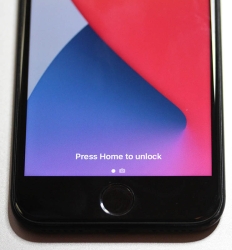
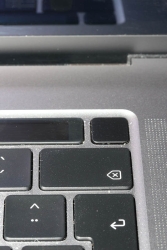

The pics are from iPhone 7, MacBook Pro and Lenovo T570. Hardware that I use regularily, but enter password rarely. There obviously exists other types of biometrics and password replacements, but I think you'll catch the general idea of life after passwords.
Then, looking at the keyboard of my gaming PC:
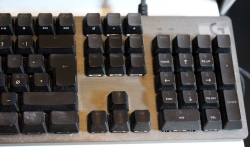
Something I use on daily basis, but it really puzzles me why Logitech G-513 doesn't have the fingerprint reader like most reasonable computer appliance does. Or generally speaking, if not on keyboard could my self assembled PC have a biometric reader most devices do. Why must I suffer from lack of simple, fast and reliable method of authentication? Uh??
Back-in-the-days fingerprint readers were expensive, bulky devices weren't that accurate and OS-support was mostly missing and injected via modifying operating system files. Improvements on this area is something I'd credit Apple for. They made biometric authentication commonly available for their users, when it became popular and sensor prices dropped, others followed suit.
So, I went looking for a suitable product. This is the one I ended up with:
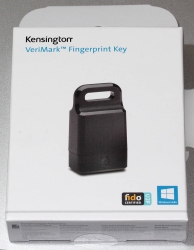
A note: I do love their "brief" product naming! ![]()
It is a Kensington® VeriMark™ Fingerprint Key supporting Windows Hello™ and FIDO U2F for universal 2nd-factor authentication. Pricing for one is reasonable, I paid 50€ for it. As I do own other types of USB/Bluetooth security devices, what they're asking for one is on par with market. I personally wouldn't want a security device which would be "cheapest on the market". I'd definitely go for a higher price range. My thinking is, this would be the appropriate price range for these devices.
Second note: Yes, I ended up buying a security device from company whose principal market on mechanical locks.
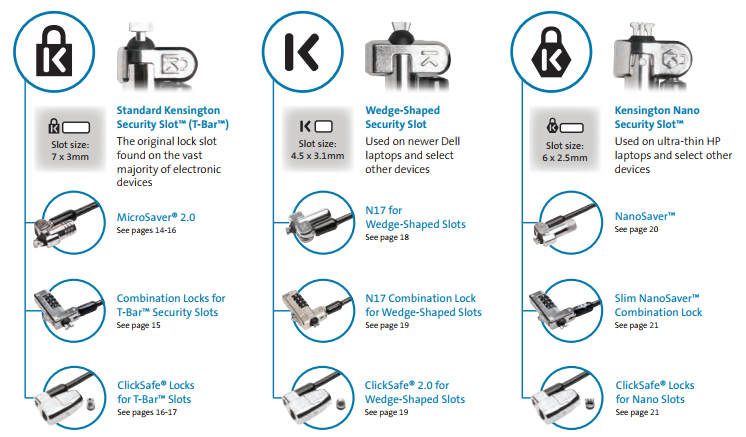
Here is one of those lock slots on the corner of my T570:
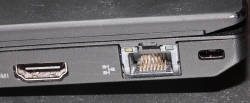
From left to right, there is a HDMI-port, Ethernet RJ-45 and a Kensington lock slot. You could bolt the laptop into a suitable physical object making the theft of the device really hard. Disclaimer: Any security measure can be defeated, given enough time.
Back to the product. Here is what's in the box:
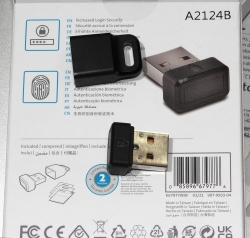
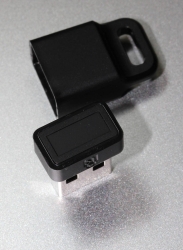
That would be a very tiny USB-device. Similar sized items would be your Logitech mouse receiver or smallest WiFi dongles.
With a Linux running lsusb, following information can be retrieved:
Bus 001 Device 006: ID 06cb:0088 Synaptics, Inc.
Doing the verbose version lsusb -s 1:6 -vv, tons more is made available:
Bus 001 Device 006: ID 06cb:0088 Synaptics, Inc.
Device Descriptor:
bLength 18
bDescriptorType 1
bcdUSB 2.00
bDeviceClass 255 Vendor Specific Class
bDeviceSubClass 16
bDeviceProtocol 255
bMaxPacketSize0 8
idVendor 0x06cb Synaptics, Inc.
idProduct 0x0088
bcdDevice 1.54
iManufacturer 0
iProduct 0
iSerial 1 -redacted-
bNumConfigurations 1
Configuration Descriptor:
bLength 9
bDescriptorType 2
wTotalLength 0x0035
bNumInterfaces 1
bConfigurationValue 1
iConfiguration 0
bmAttributes 0xa0
(Bus Powered)
Remote Wakeup
MaxPower 100mA
Interface Descriptor:
bLength 9
bDescriptorType 4
bInterfaceNumber 0
bAlternateSetting 0
bNumEndpoints 5
bInterfaceClass 255 Vendor Specific Class
bInterfaceSubClass 0
bInterfaceProtocol 0
iInterface 0
Endpoint Descriptor:
bLength 7
bDescriptorType 5
bEndpointAddress 0x01 EP 1 OUT
bmAttributes 2
Transfer Type Bulk
Synch Type None
Usage Type Data
wMaxPacketSize 0x0040 1x 64 bytes
bInterval 0
Endpoint Descriptor:
bLength 7
bDescriptorType 5
bEndpointAddress 0x81 EP 1 IN
bmAttributes 2
Transfer Type Bulk
Synch Type None
Usage Type Data
wMaxPacketSize 0x0040 1x 64 bytes
bInterval 0
Endpoint Descriptor:
bLength 7
bDescriptorType 5
bEndpointAddress 0x82 EP 2 IN
bmAttributes 2
Transfer Type Bulk
Synch Type None
Usage Type Data
wMaxPacketSize 0x0040 1x 64 bytes
bInterval 0
Endpoint Descriptor:
bLength 7
bDescriptorType 5
bEndpointAddress 0x83 EP 3 IN
bmAttributes 3
Transfer Type Interrupt
Synch Type None
Usage Type Data
wMaxPacketSize 0x0008 1x 8 bytes
bInterval 4
Endpoint Descriptor:
bLength 7
bDescriptorType 5
bEndpointAddress 0x84 EP 4 IN
bmAttributes 3
Transfer Type Interrupt
Synch Type None
Usage Type Data
wMaxPacketSize 0x0010 1x 16 bytes
bInterval 10
Device Status: 0x0000
(Bus Powered)
So, this "Kensington" device is ultimately something Synaptics made. Synaptics have a solid track-record with biometrics and haptic input, so I should be safe with the product of my choice here.
For non-Windows users, the critical thing worth mentioning here is: There is no Linux support. There is no macOS support. This is only for Windows. Apparently you can go back to Windows 7 even, but sticking with 10 or 11 should be fine. A natural implication for being Windows-only leads us to following: Windows Hello is mandatory (I think you should get the hint from the product name already).
Without biometrics, I kinda catch the idea with Windows Hello. You can define a 123456-style PIN to log into your device, something very simple for anybody to remember. It's about physical proximity, you need to enter the PIN into the device, won't work over network. So, that's kinda ok(ish), but with biometrics Windows Hello kicks into a high gear. What I typically do, is define a rather complex alphanumeric PIN to my Windows and never use it again. Once you go biometrics, you won't be needing the password. Simple!
Back to the product. As these Kensington-people aren't really software-people, for installation they'll go with the absolutely bare minimum. There is no setup.exe or something any half-good Windows developer would be able to whip up. A setup which would execute pnputil -i -a synaWudfBioUsbKens.inf with free-of-charge tools like WiX would be rather trivial to do. But noooo. Nothing that fancy! They'll just provide a Zip-file of Synaptics drivers and instruct you to right click on the .inf-file:
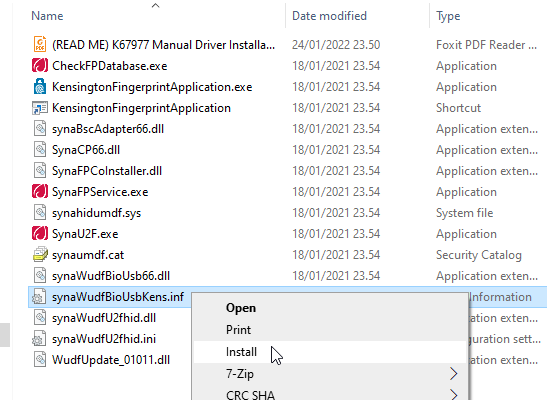
To Windows users not accustomed to installing device drivers like that, it is a fast no-questions-asked -style process resulting in a popup:
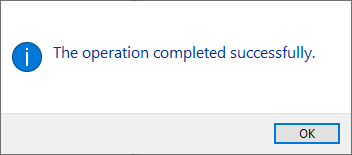
When taking a peek into Device Manager:

My gaming PC has a biometric device in it! Whoo!
Obviously this isn't enough. Half of the job is done now. Next half is to train some of my fingers to the reader. Again, this isn't Apple, so user experience (aka. UX) is poor. There seems not to be a way to list trained fingers or remove/update them. I don't really understand the reasoning for this sucky approach by Microsoft. To move forward with this, go to Windows Settings and enable Windows Hello:
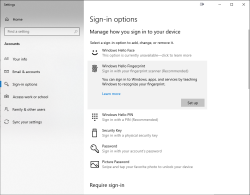
During the setup-flow of Windows Hello, you'll land at the crucial PIN-question:
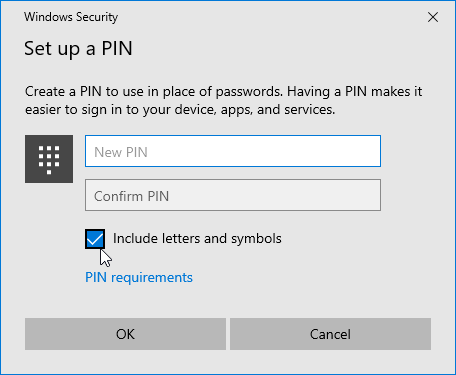
Remeber to Include letters and symbols. You don't have to stick with just numbers! Of course, if that suits your needs, you can.
After that you're set! Just go hit ⊞ Win+L to lock your computer. Test how easy it is to log back in. Now, when looking at my G-513 it has the required feature my iPhone 7, MBP and Lenovo has:

Nicely done!
123RF Leak - Fallout
Sunday, July 3. 2022
Your and my data is leaked left and right all the time by organizations who at the time of you entering your precious PII (or Personally Identifiable Information) solemny swear to take really good care of it. Still they fail at it. By adapting the famous speech by John F. Kennedy: "Not because it is easy, but because it is hard." Even companies whose business is information security get hacked, or mis-configure their systems or human administrators fail at a minor thing causing major disasters, causing data to leak. Because it is very very hard to protect your data. Let alone companies whose business is not information security, they simply want to conduct their business on-line and not to focus in nurturing YOUR information. When a flaw in their system or procedures is found by malicious actors, data will be leaked.
I don't think this is about to change anytime soon. Unfortunately.
Back in 2020, a site called 123RF.com was pwned. How, or by whom is irrelevant. They failed protecting MY data. More details are available in Bleeping Computer article Popular stock photo service hit by data breach, 8.3M records for sale.
As anybody can expect, there are negative effects on such leaks. Today, such negativity manifests itself in my mailbox as follows:
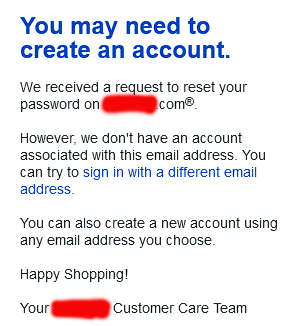
A company, who has nothing to do with me is sending email to my unique 123RF-dedicated address, stating my attempt to request password recovery on their on-line service has failed. Ok, intersting. Not cool. ![]() However inconvenient this is to me, I fail to find the attacker's angle on this. By sending 8.3 million password recovery attempts to a public endpoint is a far fetch. They might by shear luck get access to somebody's account on the targeted site. Most likely not. But it's worth the try as it won't cost them anything and very easy to do.
However inconvenient this is to me, I fail to find the attacker's angle on this. By sending 8.3 million password recovery attempts to a public endpoint is a far fetch. They might by shear luck get access to somebody's account on the targeted site. Most likely not. But it's worth the try as it won't cost them anything and very easy to do.
This exact same has happened to me multiple times. An example from 2018 is my blog post DocuSign hacked: Fallout of leaked E-mail addresses. Given all the time and effort I put into creating mail system where I can have unique addresses to all possible use-cases it will be easy to identify the leaking source. Me and many others thought EU's GDPR was supposed to help every single Internet user with this, but still Wired is writing in their May 2022 article How GDPR Is Failing (sorry about the paywall, I'm a subscriber).
I'd like to end this by expressing my generic despair and agony not targeted towards anybody in particular while still targeted towards all stakeholders. It's a movie quote from the original -68 Planet of the Apes where at the end of the film Charlton Heston's character understands what had happened and how he ended up in that mess:
Ah, damn you! God damn you all to hell!
FTC-case: Cafepress leak
Thursday, June 30. 2022
Couple days ago I got an email to a really old address of mine. I happen to own number of domains and most of them are connected to the mail system on my home Linux server. Many many years ago I stopped using a single email address for the simple reason that I couldn't identify to whom I had given that address to. This is a design flaw in archaic asynchronous messging methods like snail mail, telephone calls or SMTP. You simply don't know who is contacting you and where did they obtain your information from.
To defeat this design flaw I have an unique email address for every single service I ever hand my information to. That particular address in question pre-dates my system and is roughly 20 years old. So, no way of knowing who originally leaked it or how many times the address has been leaked. As I don't use it anywhere anymore, an email sent there is with 99,9% confidence junk.
Why I'm writing about that email is obvious, it had very interesting content. Sender claimed to be (a company?) called CafePress. Something I've never head of. Another reason why I kept investigating this maybe-spam was the subject of "Notice of FTC Settlement - 2019 Data Breach". Ok. Federal Trade Commission of USA was addressing me via CafePress. Really interesting!
First the technical ones. To deduce if this was spam or not, I always check the mail headers. This baby had both SPF and DKIM verified correctly. Both technical measures are pretty much a must for anybody to accept the incoming set of bytes. Well, also spammers know this and typically use Google or Microsoft as spam platforms via their free-of-charge mail offerings.
As technical details checked out, next the actual sending server. It originated to something called https://www.sparkpost.com/. Again, something I've never heard of. Ultimately this mail passed all techical checks. My thinking started leaning towards this being the Real Deal.
Email contents:
Dear Valued Customer,
We are contacting you about the 2019 breach of your information collected by the prior owners of CafePress. This notice is about that breach, which you may have already been notified of.
We recently reached a settlement with the Federal Trade Commission, the nation's consumer protection agency, to resolve issues related to the 2019 data breach, and to make sure CafePress keeps your information safe. What happened?
Before November 2019, CafePress didn't have reasonable practices to keep your information safe. When the company had a security breach, the following information about you may have been stolen: your email address, password, name, address, phone number, answers to your security questions, and the expiration date and last four digits of your credit card.
What you can do to protect yourself
Here are some steps to reduce the risk of identity theft and protect your information online:
<blah blah removed>
Sincerely,
Chris Klingebiel
General Manager, CafePress
Hm. Interesting.
Somebody in a company I've never heard of leaked my data in 2019 by a hack. Well, why did they have my information on the first place!
Googling the topic for more details:
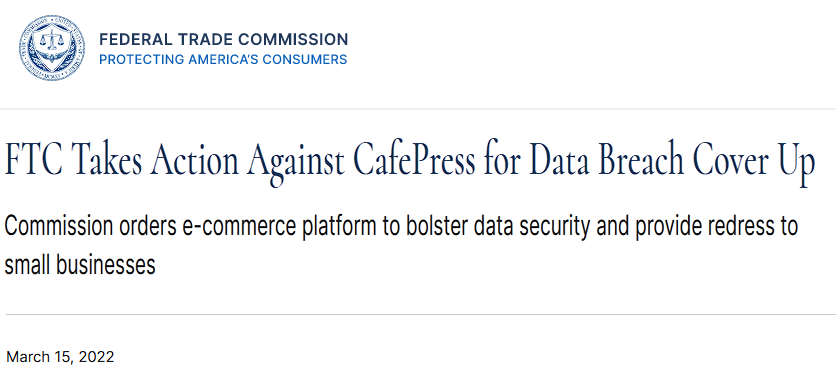
Article Commission orders e-commerce platform to bolster data security and provide redress to small businesses is available on FTC.gov. It was legit after all!
Press release mentionded following: "Residual Pumpkin Entity, LLC, the former owner of CafePress, and PlanetArt, LLC, which bought CafePress in 2020". Whoa! Even more companies which I never heard of.
Some highlights:
According to the complaint, a hacker exploited the company’s security failures in February 2019 to access millions of email addresses and passwords with weak encryption; millions of unencrypted names, physical addresses, and security questions and answers; more than 180,000 unencrypted Social Security numbers; and tens of thousands of partial payment card numbers and expiration dates.
Obviously this CafePress (or whoever it is) didn't do much of a job for protecting their stolen/bought/downloaded-from-DarkNet -data. It's a good thing FTC gave them a slap-on-the-wrist -punishment as the company is clearly crooked. Why an earth didn't FTC do more follow up on the origins of the data? I'd definitely love to hear how this CafePress got my data into their hands. I didn't volunteer it, that's for sure!
Really puzzling case this. I suppose it speaks volumes about the modern state of Internet.
Breaking the paywall - Follow up
Wednesday, June 22. 2022
Back-in-the-day, roughly three years ago, I wrote a JavaScriptlet for breaking trough a press website's paywall. At the time I promised not to "piss" into their proverbial coffee pot and not publish updated versions of my hack. I kept my word. It was surprisingly easy! They didn't change a thing. Until now.
This particular ICT-media finally realized their client tell to contain mostly smart people with good computer skills. Just clicking a button on your shortcuts-bar of your chosen web browser after reading 5 articles was too easy. They finally went into full-blown hedgehog defense and enabled two measures:
- Without authentication, your IPv4-address is tracked.
- No cookies required
- Doesn't care which browser on which computer you're using
- There is a very small number of free-of-charge articles you can read per day. I'd say 5.
- Unfortunately their AWS-setup doesn't have IPv6 enabled. With that I'd have much more IP-addresses at my disposal.

- With authentication, the number of free-of-charge articles is limited. I'd guess to 10 of them.
For proper paywall breakage, lots of IPv4-addresses would be required. I do have some, but I'd rather not play this game anymore. I'll call it quits and stick with the headers of their RSS-feed. Obviously, they'll limit the feed into last 10 articles, but if you keep reading and accumulating the data 24/7, you'll get all of them.
Good job! One potential customer lost.
Google Analytics 4 migration
Monday, June 20. 2022
For number of reasons, instead of migration, I should write migraine. First is about moving from an old system into a new one. Latter is about medical condition causing severe headaches. In this case, there seems to be not much of a difference.
Google's own Make the switch to Google Analytics 4 -migration guide has 12 steps. Given complexity, the time I have to invest on this and lack of really diving into this, I probably missed most of them.
Going into GA4-console, I have this:
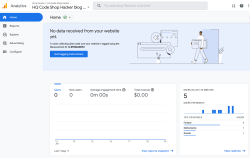
Clicking on Get Tagging Instructions, I'll get further information:
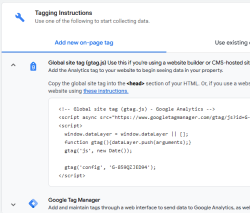
There is a snippet of JavaScript, which I can inject into this site.
<script async="" src="https://www.googletagmanager.com/gtag/js?id=G-859QZJED94"></script>
<script>
window.dataLayer = window.dataLayer || [];
function gtag(){dataLayer.push(arguments);}
gtag('js', new Date());
gtag('config', 'G-859QZJED94');
</script>
Note: My GA4-stream ID is G-859QZJED94. Make sure to use yours, not mine. As the stream ID cannot be a secret, it's ok to publish it here. The same ID can be found from HTML-code of this page.
To verify installation success, I went to GA4 portal, chose Reports and Realtime. It didn't take long, less than a minute, for that report to indicate user activity. Many other places keep saying "No data received from your website yet", "No data received in past 48 hours" or "Data collection isn’t active for your website". IMHO all of those are incorrect, as I do have stats. We'll see if I managed to do that right.
